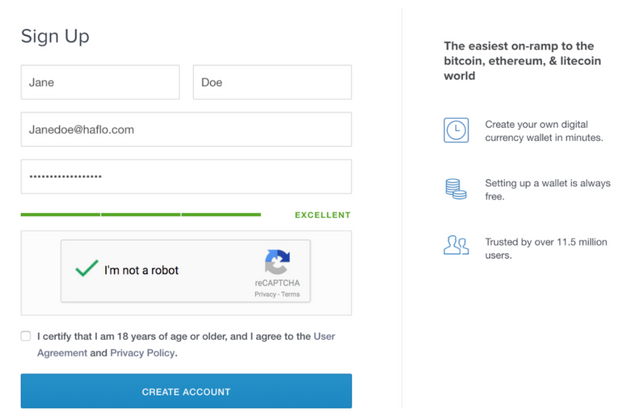How to begin (for the Crypto-Noobs)

Since I have had quite a few newcomers approach me and ask how they can start investing in cryptocurrency, I’ve decided to make a step-by-step guide. Before I begin, I want to reiterate that in the crypto-world there is no help-line or lost and found for your wallets. If you lose your private key, or your wallet gets hacked, you don’t get the second chance that you would get with a lost credit card. So remember, never invest more than you can afford to lose. Additionally, I want to say that I am providing a guide based on my own experience but I am not a cryptocurrency expert, nor do I intend to be.
First things first, you need to get yourself a new wallet! I am not talking about a nice hard-leather wallet, or a money clip. You need a cryptocurrency wallet. The reason you need a wallet is to store your private keys. Now remember, every type of currency you hold needs to be stored in its own wallet that corresponds to the specific cryptocurrency. If you try to put Ether into a Bitcoin wallet, you will lose your money honey. Private and public keys are used to send and receive cryptocurrency. When you open a wallet, a private and public key are generated. This is much like creating an email account. Anyone can have your email address, but you keep your email password to yourself. The public key is the address; the private key is your password. Each private key is made up of 51 alphanumerical characters, this makes it difficult to hack. Digital wallets store these private keys for you (Imagine writing in a 51-character password every time you send an email!). As an extra layer of security, be sure to get two factor authentication on your accounts and wallets. This way you have to verify your account in two ways before accessing it. This makes your wallet much harder to hack! There are three kinds of cryptocurrency wallets: software, hardware, and paper.
Software Wallets
Software wallets are the riskiest of the three, but also the easiest to manipulate and the most practical. These are sometimes called hot wallets (wallets that connect to the internet). Software wallets can be installed onto your desktop, phone, or online. The best thing about software wallets is that you can use them to make payments anywhere anytime. The risk factor with these wallets is that they are easier to hack since they live on your desktop, your phone, or in the cloud. My favorite: Exodus
Hardware Wallets
Hardware wallets are like a blast from the past. They are also called cold wallets because they store your coins offline. They live on your USB drive, or even on a floppy disk (Just kidding! Do those even exist anymore?). But yes, hardware wallets mean an external drive that is plugged into your computer. This makes it safer than using a software wallet. I for one have never heard of anyone hacking a USB drive, but it does happen, so beware of malicious trojan horses on your computer. My favorite: Ledger Nano S
Paper Wallets
These are the coldest of wallets. Paper wallets are like going back to the stone age, but are indeed the most secure. When I say paper, I literally mean paper. With a paper wallet, you actually print out or write down your private keys and keep them in a safe place. This is a good method to store large chunks of your cryptocurrency. Just remember, if you lose your paper wallet, you lose your cryptocurrency. My favorite: HP OfficeJet Pro 6968 All-in-One Printer (Just Kidding). Try Bitcoin Paper Wallet Tool.
Exchanges
There is one more category of “wallet” called an exchange. Exchanges are mostly used for trading purposes, however a lot of them also act as wallets. Just like software wallets, it is best to keep a limited amount of cryptocurrency in the exchange, since you have little to no control over the currency in the exchange.
Since I am in favor of the simplicity of software, I will teach you how to begin investing through Coinbase, because it is the platform I am most familiar with and the easiest to use. As a side note, Coinbase is actually not categorized as a wallet (it is an exchange), but it functions very similarly since it allows you to trade and stores your coins, and is great for beginners. You will never actually see your private keys on Coinbase, the platform stores and manipulates them for you, which is why it is ideal for beginners. This also means that it is not the best platform for storing a large amount of currency because if Coinbase were to get hacked, you could lose all your coins. For large amounts of cryptocurrency, I suggest getting a cold wallet and transferring in chunks that you want to store. First you will need to register.
Hopefully, you are not a robot.

Next, you will have to go through a verification process that includes scanning your ID. But before you do this, you should have verified your phone number and Coinbase should have slid into your DM’s (text messages) like so:

I recommend downloading their app so that you can access your wallet at all times. After you download the app you can easily verify your identity from your phone.

Once you complete all the prompts and link your payment, you can buy and sell Bitcoion, Ethereum, and Litecoin on Coinbase.
Coinbase is a good start because it gives you access to the three most reputable and popular cryptocurrencies. Once you get comfortable with Coinbase and start feeling fancy, you can sign up for a few other wallets that allow you to buy and exchange alternate coins. If you want to dig a bit deeper into alternate coins before signing up for a new wallet and investing, feel free to read my previous articles and learn more! If you have any topics you would like to learn more about, feel free to comment and I will try my best to cover them in my next articles.
Martin Hauge & Sophia Noel
*PS: Here are a few more wallets/ exchanges you can explore:
Software:
Bread Wallet
Copay
Jaxx
Blockchain
NEO Wallet
NEO Tracker
ShapeShift
Hardware:
Trezor
KeepKey
Paper:
https://www.wikihow.com/Make-a-Paper-Wallet (Kidding)
Exchanges:
Kraken
Bittrex
Sources
Congratulations @sophianoel! You received a personal award!
Click here to view your Board
Congratulations @sophianoel! You received a personal award!
You can view your badges on your Steem Board and compare to others on the Steem Ranking
Vote for @Steemitboard as a witness to get one more award and increased upvotes!